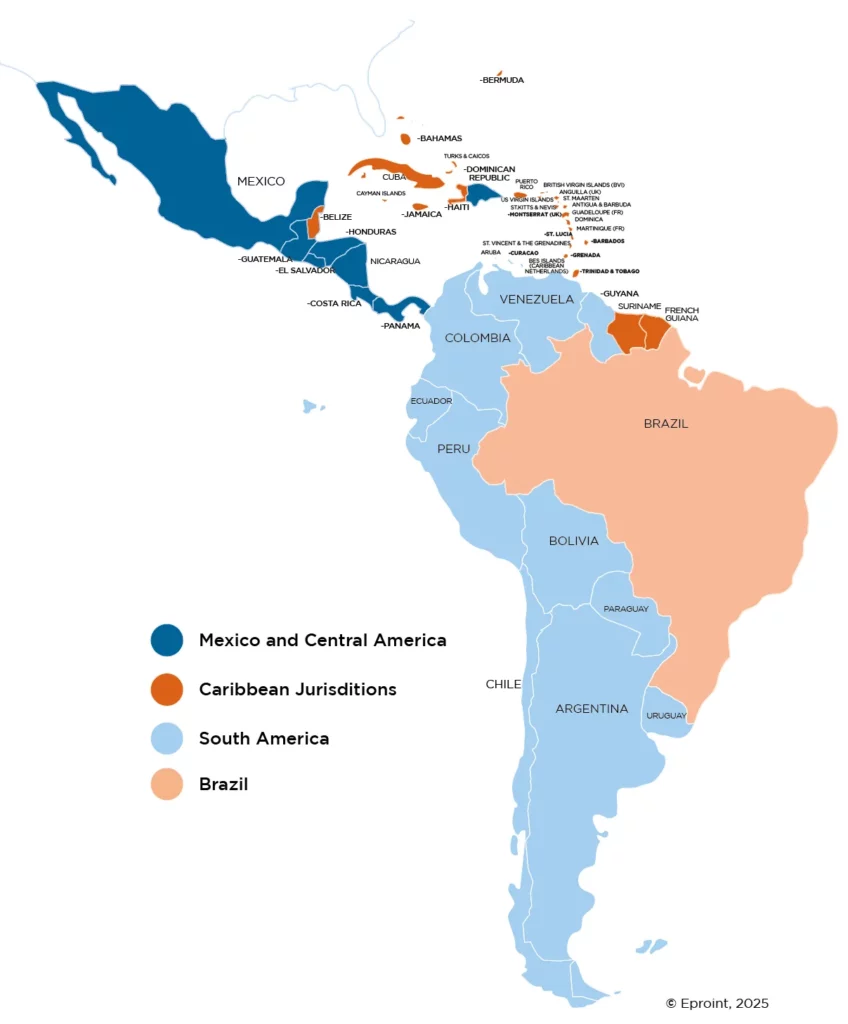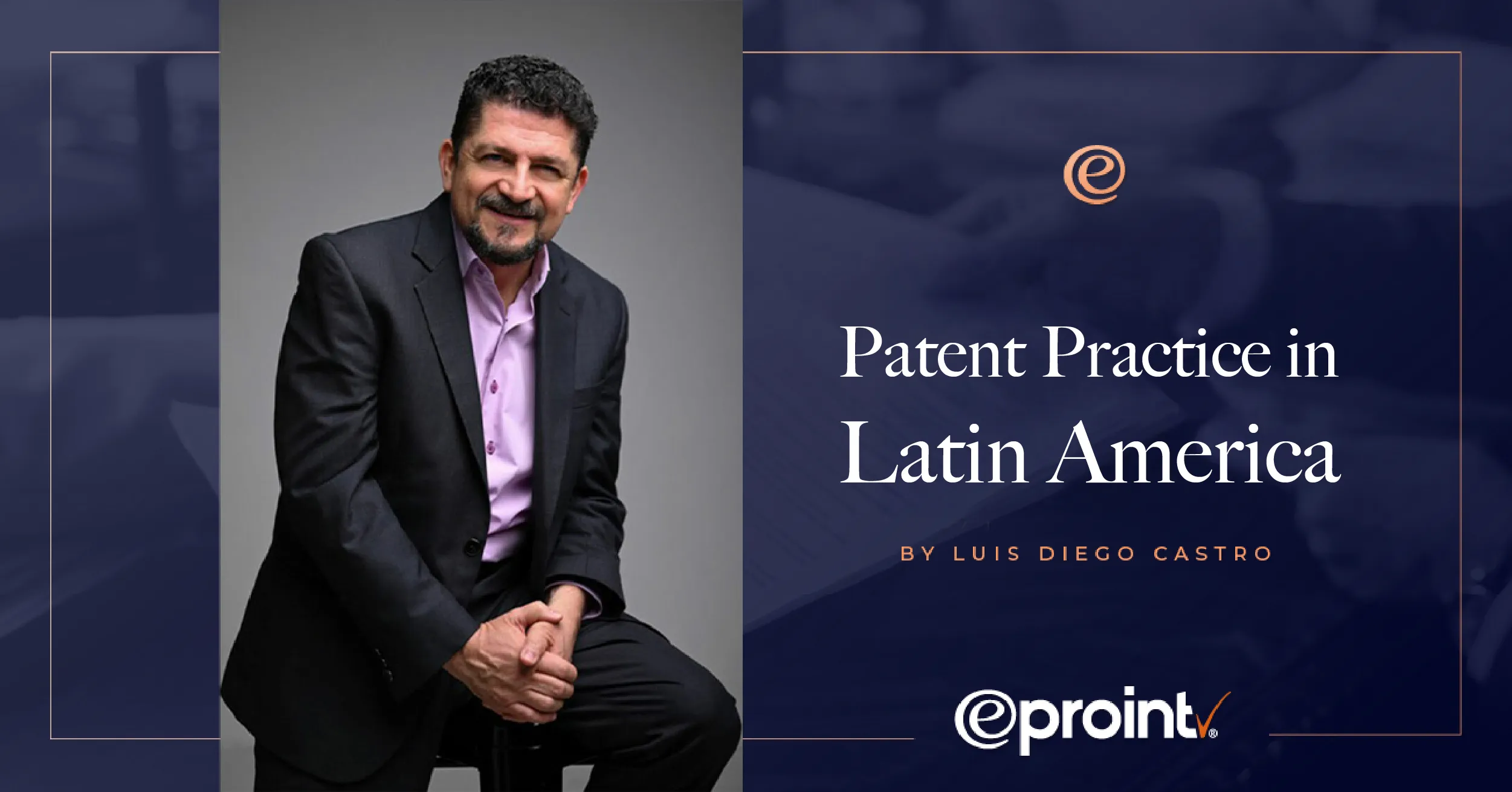Patent Practice in Latin America
The following is a revised version of an article originally published by the author in 2021. This is the first part of a two-part series.
Sometimes the definition or understanding of an expert, profession or professional varies from region to region around the world. Patent practitioners in the United States may be divided in two main groups, patent agents and patent attorneys. But what happens when we try to match these professionals with their equivalents in other geographical regions? Latin America is one these regions, actually several subregions within a region. The references and terminology used are from the perspective of a patent practitioner from Latin America, attempting an explanation of some local understandings, and in some cases to clarify misconceptions. Let’s start by explaining the geography of the region, both the natural geography and the relevant geography, because sometimes these don’t match. You see in a map that certain countries are evidently located in South America, but for IP purposes they need to be treated as Caribbean countries. This is relevant information to take into consideration when planning your prosecution strategy in this region.
Latin America – 4 Sub-Regions
In Latin America we usually recognize four clear subregions. From North to South these are Mexico and Central America, Caribbean Islands, South America and Brazil. A large majority of countries are members of the Patent Cooperation Treaty, with the exception of Argentina, Venezuela, Paraguay, Bolivia, Guyana, Suriname and Haiti.
1. Mexico and Central America.
Mexico. One of the largest countries in the region. Some, especially in the United States, consider Mexico part of Central America. This is not how Latin Americans see it. Mexico is part of North America, together with Canada and United States. Among the most active countries with regards to intellectual property, Mexico is just behind Brazil in the number of patent applications filed per year.
Central America. The isthmus between Mexico to the North and Colombia to the South, made of seven independent countries, with their own constitution, government, laws and courts. In geographical order these are Guatemala, Belize, El Salvador, Honduras, Nicaragua, Costa Rica and Panama. All except Belize, which for IP purposes is considered a Caribbean country, are of Spanish heritage, speak Spanish and follow the Civil Law system. There is no actual integration in any field. For intellectual property purposes, other than the standardization implemented by World Trade Organization with its agreement on Trade Related Aspects on Intellectual Property (TRIPs), there are no common or regional regulations. Among the seven countries Costa Rica is the most active in number of patent applications filed, followed by Panama and Guatemala.
2. Caribbean Islands
Countries. There are 16 independent and sovereign countries in the Caribbean. The most relevant, from a patent practitioner’s perspective, are Dominican Republic, Trinidad and Tobago, Jamaica and Cuba. Caribbean countries have diverse legal systems, with Dominican Republic and Cuba following a Civil Law system and others, of British heritage, follow a Common Law System, like Jamaica and Trinidad and Tobago. There is some integration among countries, in organizations like the Caribbean Community (Caricom) and the Organization of Easter Caribbean States (OECS), but such integration does not include regional filings of any type of intellectual property application.
Territories. These are territories that, from an IP practitioner’s perspective, are not sovereign countries with their own patent or trademark office. Some are dependent on other countries, like Puerto Rico (United States of America), Turks and Caicos (United Kingdom) and Saint Martin (France), and some are part or integrated in other countries, like Curaçao (Netherlands), Martinique (France).
3. South America
General. South American countries are mostly of Spanish heritage, follow a Civil Law system and speak Spanish. The exemptions are Brazil, that due to its magnitude in the IP world has a special section in this article, Suriname and Guyana, with Dutch and British heritage respectively, and which are, in consequence, for multiple purposes, including IP related matters, considered Caribbean countries.
South American countries. Colombia, Venezuela, Ecuador, Perú, Bolivia, Paraguay, Uruguay, Chile and Argentina are all of Spanish heritage and follow the Civil Law system. The top four, by number of patent applications filed per year, are Argentina, Chile, Colombia and Perú. These four are the largest in Latin America after Brazil and Mexico.
Andean Integration. Colombia, Ecuador, Perú and Bolivia have relevant integration for IP purposes, as members of the Andean community. With independent patent and trademark offices, these countries enjoy certain legal harmonization, common prosecution rules and a single regional court of judicial appeals, which creates common precedents.
4. Brazil
By far the largest and most populated country in Latin America, is sometimes referred as a subcontinent within the continent. Of Portuguese heritage, Brazil is the only country in South America where Spanish is not the spoken language. Brazil follows a Civil Law System and has the highest number of patent and trademark filings in the continent. Consequently, it has the highest number of patent and trademark practitioners as well.



